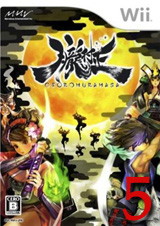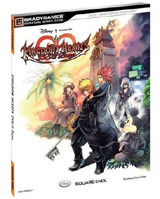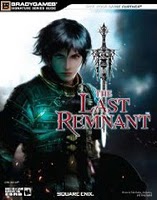 Strategy Guide Review Policy:
Strategy Guide Review Policy:
My goal for these strategy guide reviews is not to discuss whether one needs the guide to complete the game. Every gamer has different strengths and skills, and one may need every bit of a guide, another may need to look up information for quick assistance once, and another may laugh at the idea of ever using a guide, even the online freebies. My goal is to determine whether the guide is 1) helpful in the first place, 2) does it encompass gamers who need hand-holding as well as those who need a quick reference and 3) how much information does it really have.
Review:
The guide is as short as the game (it takes about 10-12 hours to finish with both characters), so this review will follow suit. The guide is also as brightly and beautifully colored as the game (this review will, unfortunately, not follow suit), making it appear as more of an artbook than a strategy guide. Along with the beautiful artwork are explanations of the roots of the Japanese demonology that spawned all of the ideas for the enemies found in the game, which makes for a nice folklore and culture lesson.
Once you get back the art and history, the actual strategy guide begins. The gameplay is a bit repetitive, so the guide doesn’t exactly offer much in terms of a walkthrough. Instead, it focuses on the maps for each level, and offers a written description of the points the player should try to find, such as hidden hot springs, restaurants, and locales of traveling merchants.
The guide really shines in the boss strategies. It advises what the character’s level should be, what minimum-level swords the character should have in his/her possession, and then goes into the various attacks the boss will bring to the table, which is great for learning ahead of time what sword-breaking attacks to avoid. Similar-styled strategies are also provided for each enemy lair.
The back appendices have everything one would expect—item, accessory, food, swords (huge forging tree), and books—but also provides more detailed information about the enemy lairs as well as tips for accessories and better swordplay.
The one complaint I have about the book (okay, there are two because it has several typos) is the spoiler section in the back. It’s great that it explains how to achieve all three of each character’s endings, but it really wasn’t necessary to go into detail about each ending. At least it was kept in the very back.
Since the game is so minimalist in so many ways, this guide could have taken a minimalist approach, and instead, it did its best to beef up the information so that no stone would be left unturned. Combine this with its stellar organization and splashes of color and gorgeous artwork, and the end result is an excellent guide. Muramasa The Demon Blade Strategy Guide gets a 5/5.
 Strategy Guide Review Policy:
Strategy Guide Review Policy: